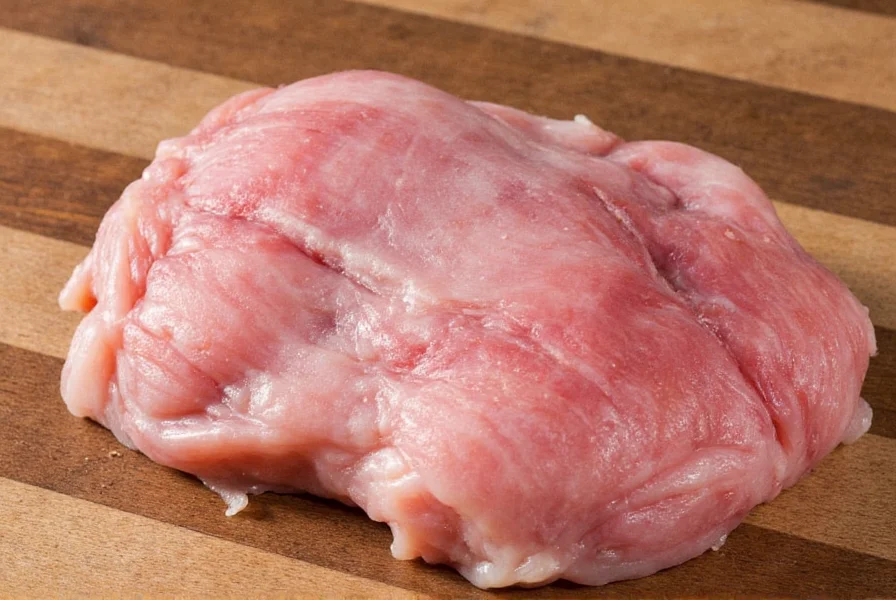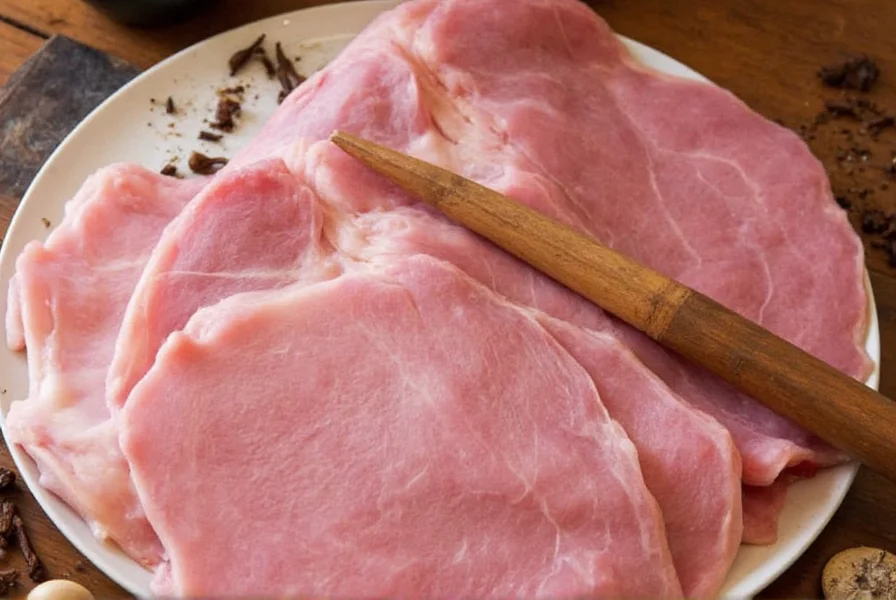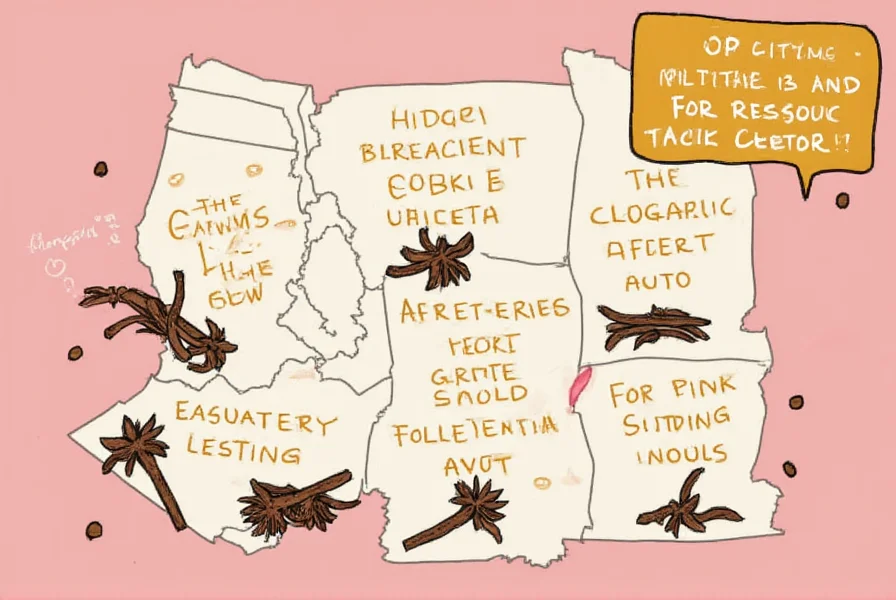When preparing holiday ham or special occasion roasts, cloves provide that distinctive aromatic quality that transforms a simple cured meat into a memorable centerpiece. This guide explores the perfect balance of cloves for ham, including proper techniques, quantities, and complementary flavors that create a harmonious dish every time.
The Science Behind Cloves and Ham Pairing
Cloves contain eugenol, a compound that provides their distinctive warm, slightly sweet, and peppery flavor. This compound interacts beautifully with the salt content in cured ham, creating a balanced flavor profile that enhances rather than overwhelms. The fat content in ham helps carry the clove's essential oils, distributing their flavor throughout the meat during cooking.
Food scientists note that the phenolic compounds in cloves actually help reduce the perception of saltiness while enhancing overall flavor complexity. This makes cloves particularly valuable when working with cured or smoked hams, which can sometimes taste overly salty on their own.
Traditional Clove Application Techniques
There are several time-honored methods for incorporating cloves into ham preparation, each with distinct advantages:
| Method | Best For | Application Tips |
|---|---|---|
| Studding | Whole baked hams | Insert whole cloves 1/4 inch deep in diamond pattern, 15-20 cloves per 7-10 lb ham |
| Ground in rub | Smoked or spiral-cut hams | Mix 1/2 teaspoon ground cloves per pound of ham with other spices |
| Infused in glaze | All ham types | Add 5-6 whole cloves to glaze mixture, remove before applying |
| Clove-studded fruit | Festive presentations | Insert cloves into pineapple rings or apple slices before arranging on ham |
Perfect Clove-to-Ham Ratios
Getting the quantity right is crucial—too few cloves won't provide enough flavor, while too many can make the ham taste medicinal. Professional chefs recommend these precise measurements:
- Whole cloves for studding: 15-20 cloves for a standard 7-10 pound ham. Space them approximately 1 inch apart in a diamond pattern across the surface.
- Ground cloves in rubs: 1/4 to 1/2 teaspoon per pound of ham. Always mix with other spices to prevent overpowering.
- Cloves in glazes: 5-6 whole cloves per cup of glaze base. Simmer the glaze with cloves, then strain before applying to the ham.
For spiral-cut hams, where studding isn't possible, create a clove-infused glaze by simmering whole cloves in the glaze mixture for 10-15 minutes before straining and applying. This technique ensures even flavor distribution without the visual distraction of whole cloves on pre-sliced ham.
Avoiding Common Clove Mistakes
Many home cooks make these critical errors when using cloves with ham:
- Over-studding: Inserting too many cloves creates an overwhelming flavor. Stick to the recommended 15-20 for standard hams.
- Improper insertion depth: Cloves should be inserted just deep enough to stay in place (about 1/4 inch). Too deep and they won't release flavor; too shallow and they'll fall out during cooking.
- Using ground cloves incorrectly: Never apply ground cloves directly to ham without mixing with other ingredients—they can create bitter, concentrated spots.
- Adding cloves too late: For optimal flavor infusion, stud the ham at least 2 hours before cooking, or ideally the night before.
Complementary Flavors for Clove-Enhanced Ham
Cloves work exceptionally well with specific flavor profiles that enhance traditional ham preparations:
- Sweet elements: Brown sugar, honey, maple syrup, and fruit preserves create the classic sweet-spice balance that defines holiday ham.
- Fruit pairings: Pineapple, oranges, apples, and cherries complement cloves' warm notes while adding acidity to cut through richness.
- Additional spices: Allspice, cinnamon, and star anise work harmoniously with cloves in ham glazes and rubs.
- Liquid components: Apple cider, orange juice, and mustard bases help distribute clove flavor evenly throughout the cooking process.
For a sophisticated flavor profile, try this professional chef's recommendation: Combine 15 whole cloves with 1 cup pineapple juice, 1/2 cup brown sugar, 1/4 cup Dijon mustard, and 2 tablespoons apple cider vinegar for a glaze that perfectly balances sweet, tangy, and spicy notes.

Regional Variations Using Cloves with Ham
Different culinary traditions have developed unique approaches to incorporating cloves with ham:
- European tradition: German and Scandinavian preparations often use fewer cloves (8-12 for a 10-pound ham) with honey and mustard glazes.
- American Southern style: Typically features more cloves (20-25 for larger hams) with brown sugar and bourbon-based glazes.
- Caribbean influence: Adds allspice and nutmeg to the cloves for a more complex spice profile with tropical fruit glazes.
- Asian fusion: Uses fewer whole cloves (6-8) combined with soy sauce, ginger, and five-spice powder for an umami-rich preparation.
When to Substitute or Omit Cloves
While cloves are traditional, certain situations call for alternatives:
- Allergies or sensitivities: Some people react to eugenol in cloves. Substitute with allspice (use 3/4 the amount) or a pinch of cinnamon.
- Milder flavor preference: For those who find cloves too intense, use 1/2 teaspoon ground allspice instead of 15-20 whole cloves.
- Modern interpretations: Contemporary chefs sometimes replace whole cloves with clove-infused syrups for more controlled flavor distribution.
- Time constraints: When preparing ham quickly, use 1/4 teaspoon ground cloves mixed into your glaze rather than studding.
Remember that cloves continue to release flavor during cooking, so what seems subtle when applied will intensify as the ham bakes. Always err on the side of slightly less rather than more—you can always add additional spice elements after cooking if needed.

Perfecting Your Clove-Infused Ham: Pro Tips
Professional chefs recommend these advanced techniques for flawless clove-enhanced ham:
- Pre-stud the night before: Inserting cloves 12-24 hours before cooking allows flavors to penetrate deeper into the meat.
- Create a flavor pocket: Make small incisions (1/2 inch deep) before inserting cloves to maximize flavor release.
- Layer your spices: Combine studded cloves with a ground clove-infused glaze for multidimensional flavor.
- Control intensity: For milder flavor, insert cloves with the blunt end first (the pointy end contains more concentrated oils).
- Temperature matters: Remove the ham from the oven when the internal temperature reaches 130°F, then let carryover cooking bring it to 140°F—this prevents cloves from becoming bitter at high temperatures.
Frequently Asked Questions
How many cloves should I use for a 10-pound ham?
For a standard 10-pound ham, use 15-20 whole cloves inserted about 1/4 inch deep. Space them approximately 1 inch apart in a diamond pattern across the surface. This provides sufficient flavor without overwhelming the ham's natural taste.
Can I use ground cloves instead of whole cloves for ham?
Yes, but with caution. Use 1/4 to 1/2 teaspoon of ground cloves per pound of ham, always mixed with other ingredients in a rub or glaze. Never apply ground cloves directly to ham as they can create bitter, concentrated spots. For best results, whole cloves provide more controlled flavor release during cooking.
When should I insert cloves into the ham?
For optimal flavor, insert cloves at least 2 hours before cooking, or ideally the night before. This allows time for the clove oils to begin interacting with the ham's surface. If using a glaze with whole cloves, simmer them in the glaze for 10-15 minutes before straining and applying to the ham during the last 30-60 minutes of cooking.
Why do my cloves keep falling out of the ham?
Cloves fall out when inserted too shallowly. They should be pressed in about 1/4 inch deep—just enough to stay securely in place. Make a small incision with the tip of a knife first if your ham has a particularly hard surface. The cloves will naturally release during cooking as the fat renders, which is part of the flavor infusion process.
What's the best glaze to use with cloves for ham?
The classic combination is brown sugar, pineapple juice, and Dijon mustard. A professional chef's ratio is 1 cup pineapple juice, 1/2 cup brown sugar, 1/4 cup Dijon mustard, and 2 tablespoons apple cider vinegar, simmered with 5-6 whole cloves (then strained) for a glaze that perfectly balances sweet, tangy, and spicy notes that complement the cloves studded in the ham.











 浙公网安备
33010002000092号
浙公网安备
33010002000092号 浙B2-20120091-4
浙B2-20120091-4